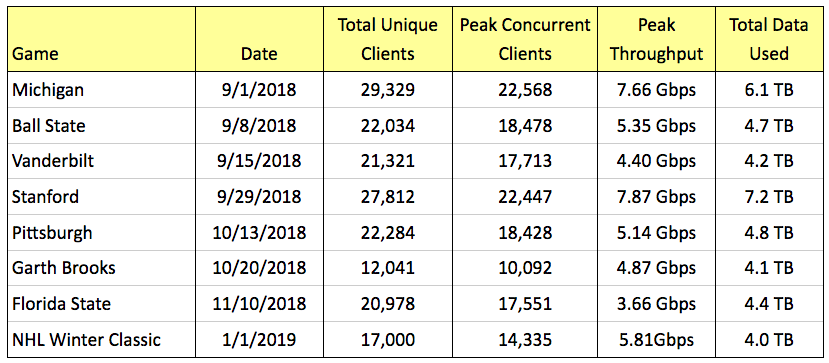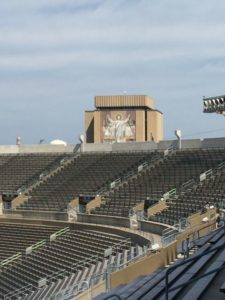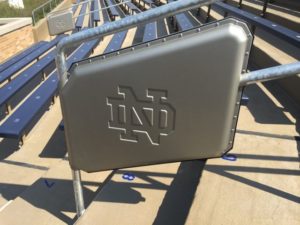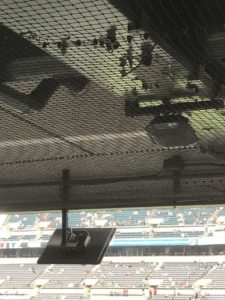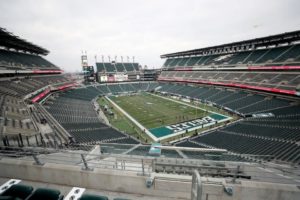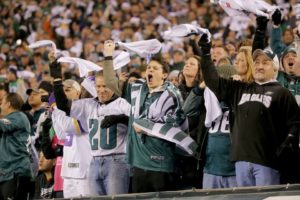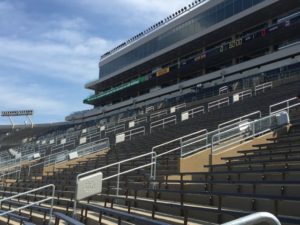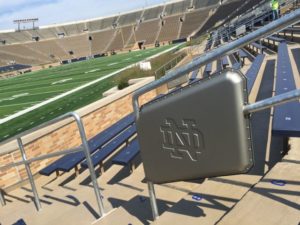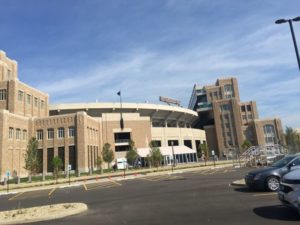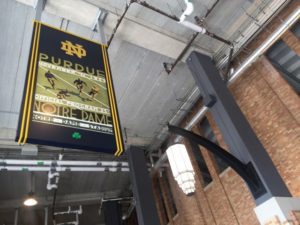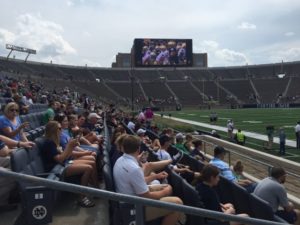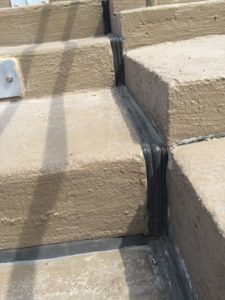It wasn’t a record-setting day for the Wi-Fi network at Notre Dame Stadium, but the 4 terabytes of data used by fans at Tuesday’s NHL Winter Classic continued a string of healthy wireless data use by attendees at the recently renovated venue.
With 76,126 in attendance to watch the Boston Bruins beat the Chicago Blackhawks in the latest of the NHL’s outdoor-arena games, some 17,000 unique devices connected to the stadium’s Wi-Fi network, according to statistics provided by the university. The peak concurrent Wi-Fi connections were 14,355, and peak throughput was 5.81 Gbps, according to the school. Given the winter weather and the fact that many fans were no doubt visiting Notre Dame for the first time, it’s no surprise that the data usage trailed all the other events at Notre Dame Stadium this fall and winter (see chart below). Still, a 4 TB day is still a big number, and again perhaps more impressive considering the conditions. Earlier this fall, Notre Dame Stadium saw 7.19 TB used for a game against Stanford.
The best of the best. #WinterClassic pic.twitter.com/tSgFq13OJc
— NHL (@NHL) January 2, 2019
According to some reports, including this story from CBS News, the second-largest ever Winter Classic crowd saw some issues arise on the concessions side, with some fans reporting that the stadium had run out of food and beer and that many concession lines were extremely long. Another report quoted a Notre Dame spokesperson as saying the reports of being out of food or beer were untrue.
More Wi-Fi stats from Notre Dame’s fall and winter events below. Thanks again to Notre Dame’s IT crew for providing the figures.
